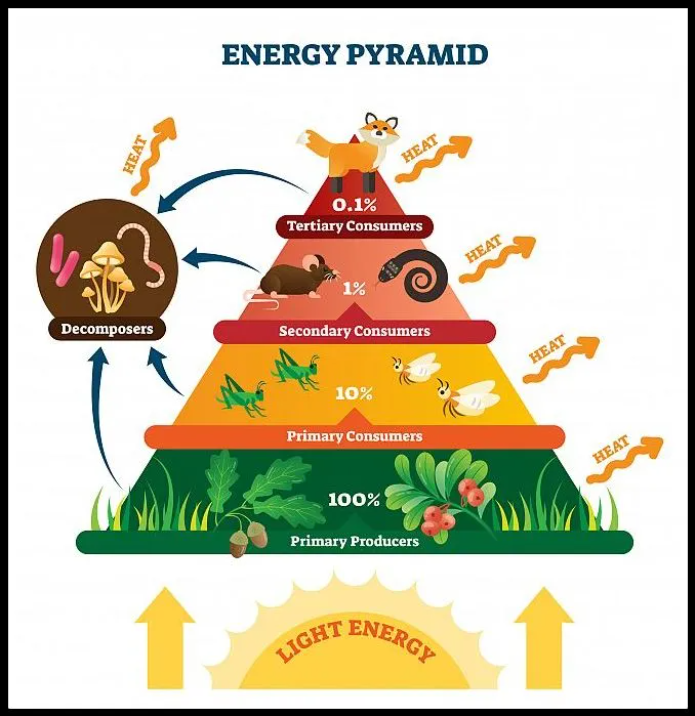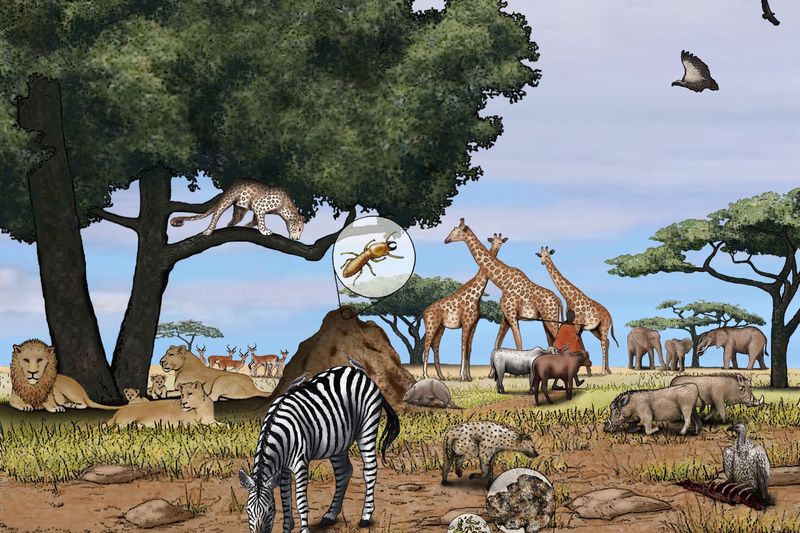CBSE Class 12 Biology Chapter 14 Revision Notes Part 1
Chapter 14: Ecosystems Revision Notes part 1
What is an ecosystem? All living organisms are grouped into composers, producers, and decomposers in the ecosystem. The producers are the plants, whereas the consumers are the organisms that eat the plants as well as eat each other. The decomposers are the bacteria and scavengers that break down dead and decaying matter, and these together form the biotic factors.
The abiotic factors or the ecosystem’s non-living components include the climate, the soil, sunlight, and temperature.
The ecosystem changes constantly. Humans threaten biodiversity because of pollution, deforestation, and disease transmission across the borders. There is also a reduction in the natural habitat caused by overpopulation. Most natural threats are also caused by species migration into a region, changes in the season, or any fatal disease that affects a single species.
Ecological Pyramid
The geographical representation in a pyramid shape that shows the feeding relation of the organism groups, the flow or biomass or energy through the various trophic levels is what makes up an ecosystem.
The pyramid has the primary producer in the base, then is the primary consumer which further goes up to the secondary consumer and the tertiary consumer.
Examples of Ecosystem
The examples of the ecosystems are limitless. It is not necessary that ecosystems have to exist over a large area. An entire ecosystem could exist in the human gut as well. The ecosystem may also cover a huge area on the planet.
In fact, the human gut houses the smallest ecosystem. Interestingly, this ecosystem does not get energy from sunlight but still supports many organisms. The human body has many ecosystems, and all of them support large colonies of healthy single-celled organisms.
A small and shaded pond in the temperate region is also an aquatic ecosystem. The waterlogged soil that affects the biodiversity of plants suitable for only a specific species is also an ecosystem. The producer organism in the ecosystem determines which organism will thrive there. The primary consumers are the herbivores, giving energy to the secondary consumer.
The Eden biome is a small part of the global ecosystem, and it has many ecosystems. The separate biomes have different light and climate levels, supporting varied composers, producers, and decomposers.
Types of Ecosystem
After knowing what an ecosystem is, let us understand the different types. Ecosystem has three basic categorizations: terrestrial, marine, and aquatic. The group can then further be broken down into many small ones.
1. Terrestrial Ecosystem
The land-based habitat is varied and is thus broken down into six kinds:
- The deciduous forest can be found in the temperate region and experiences four seasons
- The desert ecosystem is a hot, dry, semi-arid area. There is less water and an absence of a soil layer in this area.
- Grasslands are the savanna, pampas, prairies, and steppe. These experience a tropical or a temperate climate and are a link between the forest and the desert.
- The taiga is a subarctic forest region of the Arctic Circle, and it has frost or rock under its shallow soil.
- The tropical rainforest is located around the equator and is the most popular ecosystem.
- Tundra is the last terrestrial biome, and this is a treeless environment. It is located in the Arctic Circle.
2. Marine Ecosystem
This is the ocean, seas, and glaciers. The majority of it is saltwater, making the ecosystem the largest in the biome category. It is difficult to control the large marine ecosystem because the saltwater habitat has several complex compositions which vary from one coast to another as well as from the deep to the shallow areas. The composition also changes because of current and tides. There are pollutants and several organisms that keep traveling too. The marine ecosystem is grouped into the ocean floor, open marine, estuary, coral reef, and the mangrove system.
3. Aquatic Ecosystem
The aquatic ecosystem is found in freshwater sources like lakes, rivers, and pools. It makes three percent of the planet. It also includes the estuaries where the freshwater and the saltwater meet. The aquatic biome is important because freshwater is crucial for life.
Microbiomes
The microbiomes support the living organism’s biodiversity. The anatomical system is made of the microbiota. There is a relation between the biodiversity of the gut and health or the anatomical and psychological system. The microbiome is a complete ecosystem where the living and the non-living components interact with each other.
Nutrient Cycling in an Ecosystem
Nutrient or ecological recycling is the exchange or the movement of the organic and inorganic matter into the matter production. The flow of energy is a noncyclic and unidirectional path, and the movement of the mineral nutrients, on the other hand, is cyclic.
The ecosystem, like the grasslands, forests, and the aquatic ecosystem, needs to function well. If these are under threat which stands true for many ecosystems today, this can lead to huge disturbance. Without the ecosystem, life on earth would not exist.
Human activities are indeed creating a negative impact on the ecosystem. Human activities are changing the ecosystem more rapidly than ever before. This contributes to deforestation, loss in pollination, and soil exploitation, to name a few.
So how are humans affecting the ecosystem? Human activities are impacting the ecosystem, which is not noticed instantly. There is no visual impact of this for most of the time. It is also difficult to measure ecological capital.
The land is transformed to build hotels. However, there is no way to measure its value on the environment. The ecosystem is common, and it belongs to all. It is believed that humans will exploit it even further till the ecosystem is completely exhausted.
Sources:
Ecosystem. https://ncert.nic.in/textbook/pdf/lebo114.pdf. Accessed on Dec 23, 2021
]]>


